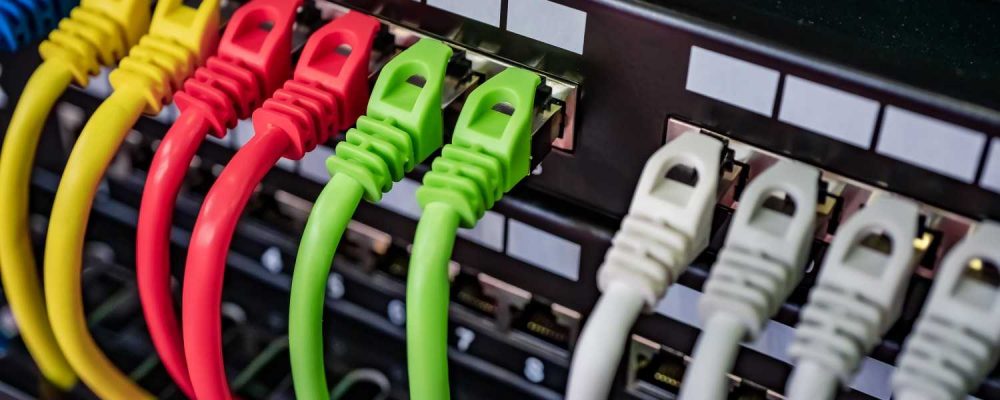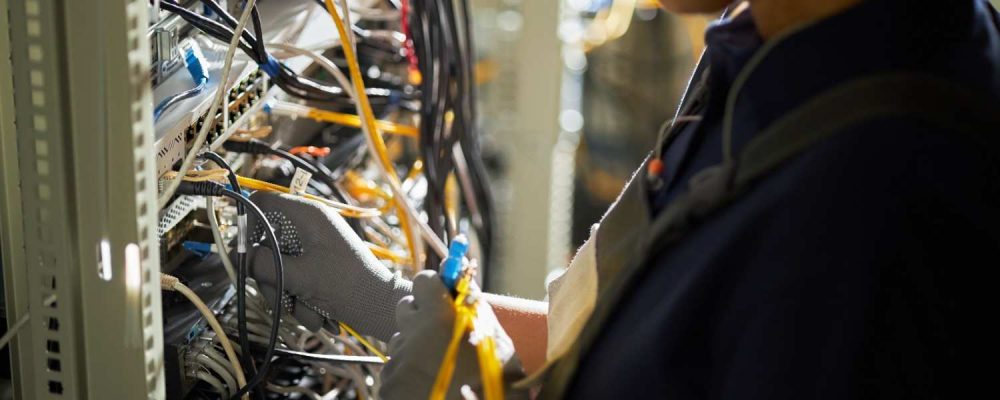Summary : Structured cabling forms the backbone of reliable IT infrastructure, enabling efficient data, voice, and video transmission. Its six core components—horizontal cabling, vertical/backbone cabling, work area components, telecommunications rooms, equipment rooms, and entrance facilities—ensure scalability, performance, and simplified maintenance. Adhering to standards like ANSI/TIA-568 minimizes errors, improves network efficiency, and supports future upgrades. With proper planning, cable management, and adoption of emerging trends such as fiber optics and PoE, businesses can build a flexible, high-performing network.

Structured cabling forms the spine of a strong IT infrastructure, ensuring efficient and reliable communication. It supports data transmission and security systems while enhancing performance.
This structured system follows standardized guidelines, making it easier to troubleshoot and upgrade as technology evolves. A modular design allows businesses to adapt quickly to changing needs.
This guide explores these components, their functions, and emerging trends shaping the future of structured cabling.
Structured premises cabling helps to set up the building and the campus-wide systems for data, sound, and video service. Everything leans towards a desire to experience windowless workspaces through just minor augmentations to the system. Inconveniences like soffits and subfloor connections are gradually being eliminated.
That passing of time witnessed a boom in the construction industry and the transformation of building fibrils into increasingly efficient wiring forms and cables. Everywhere, cabling is struggling with maintenance, especially regarding the microprocessors used in most systems on board. There is also an effort to rescue digital sound cards by installing the latest A-D technologies.
Horizontal cabling connects individual workstations to the nearest telecommunications room on a floor. It serves as the main channel for internal data exchange. Common cable types include CAT5e, CAT6, and CAT6a. These cables support high-speed transmission while minimizing interference.
To maintain reliability, cable lengths should stay under 100 meters. Following structured cabling guidelines helps prevent data loss. Proper labeling and organization make troubleshooting easier. They also simplify future upgrades, ensuring long-term network efficiency.
Fiber optic cables are preferred for their high bandwidth and minimal signal loss. For shorter distances, CAT6a and CAT7 copper cables are commonly used. A well-designed backbone should allow for future expansion. It should also include scalable cable management and redundancy to prevent failures. Good grounding and shielding help reduce electromagnetic interference. This improves overall network stability.
Work area components provide network services to end-users. The adaptability and maintenance by the final user are the most crucial considerations when designing the components. Such components include patch cables, connectors, faceplates, and workstation outlets intended for multiple uses. Therefore, the organization of these components is critical because it allows quick and easy access for maintenance and potential upgrades.
Structuring the components helps decrease the chances of any out-of-service time. It also saves maintenance and repair periods by making the components more accessible for such functions. Integration with new technologies enables businesses to build a networking system that is ready for the future. This means there will be little or no need to upgrade the network system often.
A telecommunications room is where you should go as a distribution locus for horizontal and backbone cabling. To cut cable lengths and already set aside space for future expansion, telecommunication rooms should be located so that cables can be easily manageable.
Restricted access should be set up as a safety measure, along with regular maintenance, to ensure equipment continues being in an optimal state. Implementing structured cable-routing systems and ventilation can also enhance performance and prevent overheating problems.
The equipment room houses critical networking hardware, including routers, switches, and servers, and plays a central role in IT management. Proper planning should incorporate airflow management to prevent overheating and allow seamless hardware upgrades. A modular design ensures scalability, making adapting to technological advancements and business growth easier. Backup power solutions, such as uninterruptible power supplies (UPS), are essential for maintaining network uptime and protecting against power failures.
Entrance facilities are where an organization’s internal cabling connects to external telecommunications providers. To ensure reliability, cables should be well-protected from physical and environmental damage. Compliance with local and international safety regulations is essential for maintaining a secure and efficient network infrastructure. Surge protection and grounding mechanisms can safeguard the network against electrical surges and external disruptions.

Structured cabling is essential for building a reliable and scalable network infrastructure. It simplifies installation by supporting various voice and data communication systems. All components follow strict standards for electrical performance, resistance, and fabrication. These include cables, connectors, and transmission hardware. This ensures consistency, minimizes compatibility issues, and enhances overall network efficiency.
Additionally, structured cabling makes troubleshooting easier. Identifying and resolving wiring issues becomes more efficient with diagnostic tools designed for ANSI/TIA-568.0/1 compliance. Standardized interfaces, like snap-in connectors, further streamline installation. They also reduce errors and improve long-term maintenance.
The ANSI/TIA-568 standard, introduced in 1991, was key in developing structured cabling systems. It included Generic Telecommunications Cabling for Customer Premises (C.0) and Commercial Building Telecommunications Infrastructure (C.1). Over the past 30 years, these standards have undergone multiple updates. The latest versions, ANSI/TIA-568.0 (customer premises) and ANSI/TIA-568.1 (commercial buildings) were last updated in March 2020.
A structured cabling system simplifies both installation and troubleshooting of network infrastructure. By standardizing hardware components and cable types, businesses can ensure consistency while also cutting costs.
Simplified connector designs and wiring configurations speed up the installation process. This helps minimize downtime and improves efficiency. Designed for flexibility, the ANSI/TIA-568 standard adapts to both residential and commercial environments. Its reliability makes it a preferred choice for diverse networking needs.
Structured cabling is essential for a reliable and efficient IT infrastructure, providing seamless connectivity, reduced downtime, and easier management. Investing in a well-designed system ensures scalability and supports future upgrades as technology evolves. To stay competitive, businesses must keep up with technological trends and adopt cabling solutions that enhance long-term network performance.
Plan your structured cabling system with Network Drops today to future-proof your network and maximize efficiency!
Horizontal cabling connects end-user devices to the network via telecom rooms, covering a single floor. Backbone cabling links different floors or buildings, transmitting high-capacity data between main network areas.
It reduces signal interference, ensures consistent data transmission, and supports future scalability. A well-organized cabling system minimizes downtime and enhances overall network efficiency.
They should assess current and future network needs, compliance with industry standards, scalability, and environmental factors. Proper cable management and redundancy planning are also crucial.
It minimizes maintenance, reduces downtime, and supports easy upgrades. A standardized system lowers labor costs and prevents frequent infrastructure overhauls.
Smaller businesses also benefit from improved network reliability, scalability, and reduced maintenance costs. A structured system supports growth and ensures seamless connectivity.
"*" indicates required fields
Scott Fcasni is the driving force behind Shock I.T. Support’s commercial datacomm cabling division, delivering expert solutions that power reliable, high-performance network infrastructures. With extensive experience in structured cabling and a commitment to precision, Scott ensures that every project—whether for small businesses or large enterprises—meets the highest standards of quality and scalability.